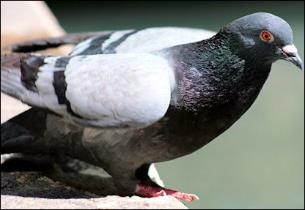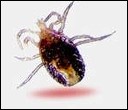Menu
Pigeon Guano
Our dedicated teams are fully equipped to support you with the infestation of Feral birds
Important Information
Where they exist in sufficient numbers, birds such as the feral pigeon present many potential problems some of which are blocked gutters, excreta marked windows, unsightly staining, foul odours, and physical hazards because of slippery excreta.
The accumulation of such toxic debris will lead to the following problems:
The removal of bird fouling calls for extreme precaution due to the hazardous nature of this substance. The diseases associated with it dictate that the most stringent of procedures should be adopted and that no personnel should be in close proximity without the proper personal protective equipment.
Health Hazards of Pest Birds
Urban pest birds promote the transmission of many types of disease, infections and illnesses. Buildings infested with pest birds place the building occupants, customers and maintenance workers at risk. These nuisance birds: pigeons, starling, house sparrows and nuisance gulls to mention just a few, transmit disease in four ways:
Numerous cases of food poisoning such as Salmonellosis occur every year. Food poisoning is caused by the Salmonella bacterium getting into food that has been left out. A main source of the Salmonella bacteria is dried faecal dust from areas covered in bird droppings.
Nuisance birds harbour ticks, fleas, mites and other ectoparasites which live on these birds; in their nests, and in places they roost. These parasites are responsible for the transmission of several hundred viral and bacterial agents, including those diseases highlighted above. Control of these parasites is a crucial phase of containing health hazards that can affect humans.
The final, and most rare, manner of transmitting any of these diseases is through direct contact with faeces. This situation arises when people get faecal dust or droppings in an open wound or open cut when cleaning or repairing an area contaminated with bird faeces.
Infection can occur locally at the location of the wound or, in serious cases, infection within the bloodstream can also occur. Proper Personal Protective Equipment and intrinsic care must always be taken when cleaning and disinfecting a bird site or installing bird control systems.
Diseases Associated with Birds
There are a variety of diseases associated with birds. They range from those commonly found with our main pest species to the rarer ones that only very occasionally arise. However, here is a break down on those that can be directly attributable:
Chlamydiosis – relating to two like diseases which are both influenza type viruses.
The one most commonly found is transmitted by birds such as pigeons and is known as Ornithosis. Although more like a flu type disease, it should be noted that fatalities can occur just as with other influenza viruses.
Psittacosis – is the rarer more serious strain being closer to atypical pneumonia. This is also associated with birds from the parrot family.
Cryptococcosis – this is a very serious illness. It begins as a lung infection but can progress to the meninges of the brain causing Meningitis.
Campylobacter – brought about by the contamination of food sources usually by corvids such as magpies which have been infected by carrion. This can result in extreme forms of gastro-enteritis.
Salmonellosis – present in upwards of 90% of feral pigeons and slightly lesser percentages in the starling. Common in most birds and species which have been handled or where a person has been in close proximity to their immediate environment. In these instances, maximum hygiene practices should be adhered to.
Extrinsic Allergic Alveolitis – or as it is more commonly known “pigeon fancier’s lung”. A serious allergic state which can only be remedied by the removal of birds and associated matter.
Erysipelas – serious wound infection which may be brought about by the transmission of streptococcus pyrogenes which may enter minor wounds from the debris of birds’ environment.
Escherichia Coli – contracted orally by ingesting food or water contaminated with a pathogenic strain shed by an infected person or animal. E. coli diarrheal disease of all types is transmitted person-to-person with hitherto unknown animal vectors. The incidence is clearly related to hygiene, food processing, general sanitation and the opportunity for contact. Recent research at Lancaster University has linked its spread to gulls.
Information on Bird Mites
Dermanyssus and Ornithonyssus species
Bird mites are very tiny, flattened parasitic arthropods in the order Acari. They belong to two closely related genera in two families: Dermanyssus species in Dermanyssidae (Fig. 1), and Ornithonyssus species in Macronyssidae. Bird mites have piercing mouthparts that enable them to take blood meals from their bird hosts. Although the mites will inadvertently bite people, they cannot reproduce without their bird hosts.
Bird mites have five stages: egg, larva, protonymph, deutonymph and adult. The larvae have three pair of legs; the nymphs and adults have four pair. Adults are about 0.7 to 1 mm in length and are just barely visible to the naked eye. Unless they are moving, they are extremely difficult to see. The color is translucent white until they take a blood meal after which the mites are reddish mahogany to brown. Mite eggs are white, oval and cannot be seen without the aid of magnification. The same applies to the larvae and nymphs.
Life History and Behavior
Most bird mite species can complete development in five to twelve days with optimal temperatures and host presence. This short life cycle makes it is possible for mite populations to attain tens of thousands of mites in bird nests during the rearing of young birds. If the population is too large (or if the fledglings vacate the nest or perish), the mites will migrate in mass to locate an alternative host. It is during this migration that mites can and do enter the living quarters of people. Some mites (i.e., Dermanyssus gallinae, the chicken mite) can survive for several months without taking a blood meal; the northern fowl mite, Ornithonyssus sylviarum, for several weeks. However, the mites do not appear to survive for more than several days in the reduced humidity (<35%) environs typically found in air-conditioned or de-humidified homes.
Clinical Symptomology
As the mites search for an alternative host, they will crawl onto the skin and conduct an exploratory bite to test the appropriateness of the host. The mite will move on, possibly trying the host again, but will not feed. These bites are felt as a “prick” and a resultant rash and itching, sometimes intense, will occur. Some individuals are apparently capable of sensing the crawling of the mites on the skin. The irritation produced by the bite is enhanced by the injection of the mite’s saliva that can cause a localized histamine response. Differential diagnosis can be difficult in the absence of mite specimens and can easily be misdiagnosed as non-descript “insect bites.” Most bird mite infestations occur during the late spring to early summer when bird nests are in abundance. When investigating claims of “insect bites” during this time of year, physicians, entomologists, and pest management professionals should inquire as to the presence of bird nests in attics, soffits, rain gutters, shrubbery next to buildings, and on windowsills and air conditioners.
Management
Birds should be discouraged from building nests in or adjacent to buildings. Close all openings large enough for birds to enter attics, soffits and similar areas. Install hardware cloth, sheet metal, or other materials to prevent birds from nesting in the building.
If mites are detected in the structure, locate the bird nest source. Remove the nest. Do not spray insecticides on the interior living areas. Insecticidal sprays may be useful in attics, inside soffits and around exterior nest locations.
Pigeon Mites

If you have pigeons nesting on your building or in your building be aware, for as night falls pigeon mites may temporarily leave their nest, enter your premises and gorge themselves on your blood.

A pigeon mite up close
The female pigeon mite lays small batches of eggs in the fibers of a pigeon’s nest. The eggs will hatch within one or two days and then the first nymphal stage (with eight legs) goes in search of its first blood meal. Pigeon mites are very small (about 1/32” long) and can be seen with the naked eye.
Pigeon mites are quiescent during the day and emerge to feed at night. The first-stage nymph usually only feeds once before moulting, but the second-stage nymph may well feed several times before its next moult. There are usually only two nymphal stages before the adult and the entire life cycle may be completed within a week with reasonably high temperatures such as what we have had this spring. The adult pigeon mites may live up to a year and may survive for several months without a blood meal.
The incidence of these pigeon mites in premises as a result of their migration from pigeon nests is quite common. This problem is even more common in urban areas, and this is usually due to the occurrence of pigeons nesting outside on window ledges and in voids in the building.
When their normal host is not present, they may also bite humans, causing discomfort and skin irritations. Fortunately, they do not reproduce on human blood, rarely transmit diseases or otherwise cause a health hazard to people. Bird mites found in sites can be difficult to distinguish, but their control often requires that they are identified correctly. The bird mites we encounter in industrial buildings are most often associated with pigeon or other bird activity.